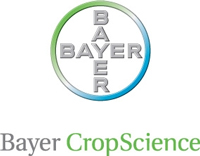 Bayer CropScience is continuing a program that helps growers and beekeepers collaborate to help feed a growing planet. With more than $15 billion dollars worth of crops in the U.S. pollinated by bees each year, the CARE program, now in its third year, reflects Bayer’s ongoing commitment to product stewardship, protecting natural resources, enhancing agricultural sustainability and promoting partnerships between growers and beekeepers, which are all needed to feed a projected 9 billion people by 2050.
Bayer CropScience is continuing a program that helps growers and beekeepers collaborate to help feed a growing planet. With more than $15 billion dollars worth of crops in the U.S. pollinated by bees each year, the CARE program, now in its third year, reflects Bayer’s ongoing commitment to product stewardship, protecting natural resources, enhancing agricultural sustainability and promoting partnerships between growers and beekeepers, which are all needed to feed a projected 9 billion people by 2050.
The CARE Program encourages growers to:
• Communicate planting activities to neighboring beekeepers when practical and be aware of beehives adjacent to the planting area;
• Be Aware of wind speed and direction during planting, particularly in areas with flowering crops;
• Reduce risk to pollinators by using Fluency Agent, a new planter seed lubricant for corn and soybeans; and
• Ensure seed is planted correctly. To help protect the environment, clean planters and seed boxes in a way to minimize dust release and ensure treated seed is planted at the proper depth.
“Growers are among the greatest stewards of our environment and Bayer CropScience supports them as they take CARE to produce the food, fuel and fiber needed for our growing world population,” said Kevin Adam, SeedGrowth strategic business lead at Bayer CropScience. “It’s our mission to help our fields and communities thrive in order to meet this challenge, and bees play a vital role in helping farmers establish a healthy harvest in a sustainable manner.”
In addition to focusing on key steps to take while planting treated seeds to sustain the environment and maximize the health of crops, CARE also champions the important relationship between growers and local beekeepers, encouraging both to maintain open channels of communication to continue to protect both crops and pollinators.









